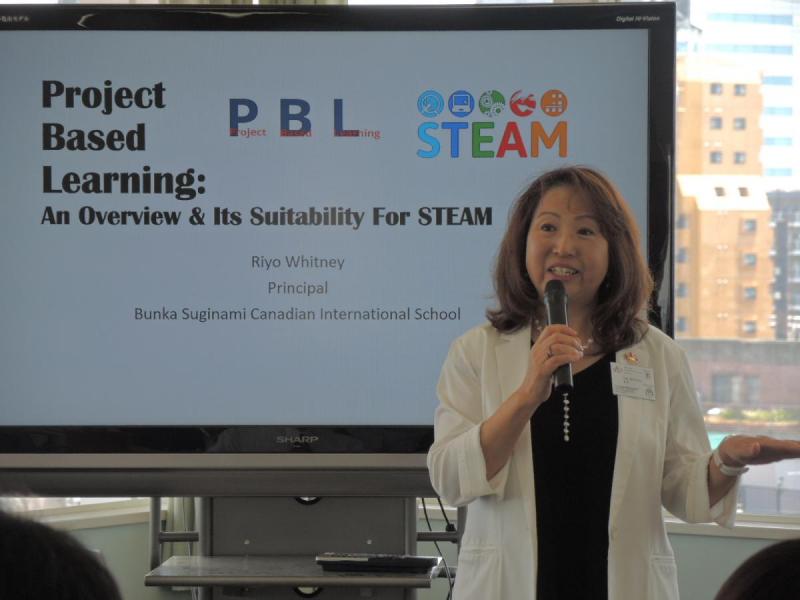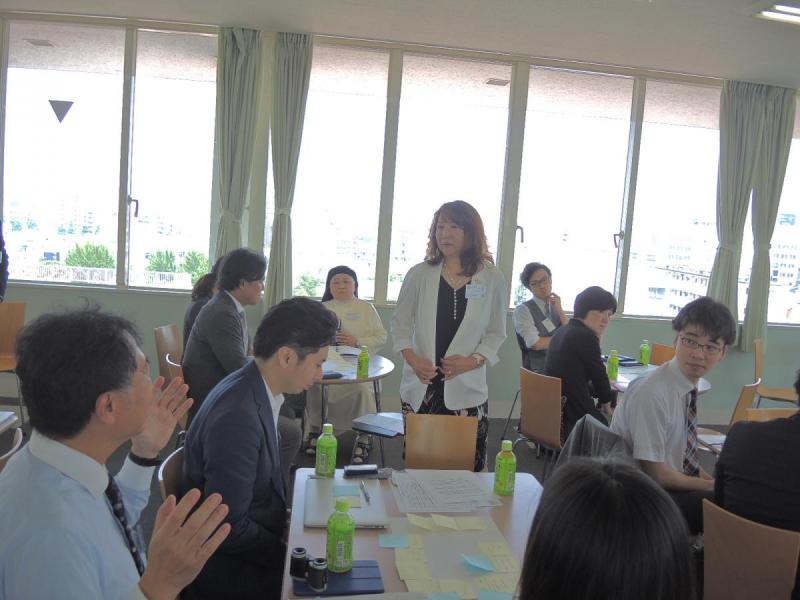Teachers from the member schools of the 21CEO, met at Fujimigaoka High School For Girls on the 26th of May, to exchange knowledge and ideas about training methods. The principal of Bunka Suginami Canadian International School, Riyo Whitney, gave a presentation about PBL (Project Based Learning).

The key to PBL is “The Driving Question”. This was pointed out several times during the presentation. A driving question is an open ended inquiry question, which students can explore in depths. It should be meaningful and authentic to the students. It should be a question about something the student wants to know.
Ms. Whitney used the question “How did WWII affect Japan?”, as an example. This is an open-ended inquiry question, but not as meaningful and authentic to students as it could be. As a way to improve this question, she changed it to “How did WWII affect our town compared to other parts of Tokyo?”. In this way, the question is more relevant and personal, which should motivate the students to find the answer.
This driving question has to be made between students and teachers working as a team. The teacher will need to guide and evaluate the students’ work and certain criteria must be set up for the working process and final product. However, as the students participate in putting forward the questions, they are able to learn about something that interests them. This will motivate them to do well on the project.
One of the reasons why PBL is so extraordinary is because it includes all students. The method allows the difficulty level to differ from project to project and student to student. There are a lot of elements to PBL, the essentials being: significant content, 21st century skills, need to know (the student wants to learn), revision and reflection, and public audience. To educate teachers effectively on the use of this method would require a lot of time, effort, and money. However, Ms. Whitney believes that in order to provide the students with a higher quality of education, we must take on such a responsibility.
Furthermore, Ms. Whitney proceeded to explain that PBL is a great match with STEAM. She showed how PBL can be applied to each segment of STEAM:
Science - impacts of energy transformations (pollution, habitat destruction, carbon dioxide output)
Technology - drafting, designing, scaling.
Engineering - equipment safety.
Arts - writing for a specific audience.
Mathematics - connecting data, graphs, situations.
These were examples of how lines can be drawn between the two methods and used together in collaboration.

At the end of the presentation, the teachers were given group assignments, in order to further enhance their understanding of PBL. It became clear that it’s not that simple to create a good driving question. However, once the question has been created, a whole stream of thoughts and ideas goes through one's head. The question will drive students to challenge themselves creatively and intellectually.